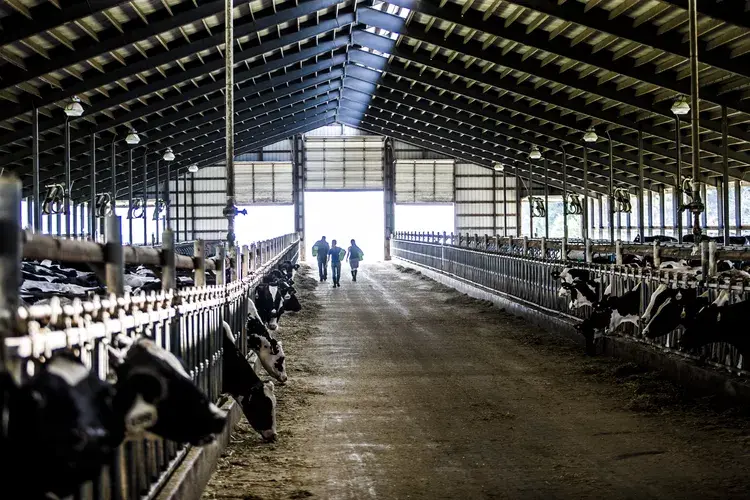The spread of the H5N1 highly pathogenic avian influenza virus to lactating dairy cows might impact...
H5N1 Virus Particles Found in Meat from Dairy Cow

Meat from a dairy cow sent to slaughter contained particles of the H5N1 avian influenza virus — the first such finding since the virus jumped to cattle from birds a few months ago, according to USDA personnel. They also confirmed infections in five additional herds — three in South Dakota and two in Colorado — raising the U.S. total to 63 herds in nine states.
The USDA said it “is confident that the meat supply is safe” because meat inspectors look for signs of illness in cattle before slaughter and in their carcasses afterward. The tissue samples that tested positive for H5N1 particles came from a culled cow. Workers for USDA’s meat safety agency “identified signs of illness in the positive animal during post-mortem inspection and prevented the animal from entering the food supply.”
Late last week, USDA reported that viral particles were found in tissue samples, including the diaphragm muscle, from one of 96 culled dairy cattle that had been condemned for slaughter for systemic diseases. To date, samples from 95 cows have tested negative for viral particles. The USDA collected 109 muscle samples from the 96 cows in its study.
The polymerase chain reaction test employed by the USDA does not differentiate between live virus or fragments. The department is still trying to identify the farm that sent the cow to slaughter.
Previously, the USDA said that cooking ground beef between 145 degrees F or 160 degrees F would destroy the virus if it was present, which are recommended temperatures for medium and well-done burgers. Even a rare-cooked burger was hot enough at 120 degrees to substantially kill the virus.
With the latest confirmations, South Dakota and Colorado each have four infected herds, according to a USDA database; Michigan has the most, at 19.
Meanwhile, researchers from the University of Pittsburgh and Emory University said milk from infected cows could remain infectious for at least an hour on milking equipment. “The team said the findings underscore the risk of contaminated surfaces to dairy workers and suggest that contaminated milking equipment may be partly responsible for cattle-to-cattle spread on affected dairy farms,” reported the University of Minnesota.
Another group of researchers said mice became ill within a day of being fed droplets of raw milk from cows infected with the H5N1 virus. “Collectively, our data indicate that (highly pathogenic avian influenza) virus in untreated milk can infect susceptible animals that consume it,” said the scientists from the University of Wisconsin and Texas A&M in the New England Journal of Medicine.
EDITOR’S TAKE:
You must believe me when I say – it is not much fun reporting about bird flu on nearly a weekly basis. Unfortunately, it is the story that just won’t die! More discouraging news with the discovery of H5N1 in meat from a culled cow. Also, additional humans who work closely with infected dairy herds have become infected in the past two weeks. Experts continue to reassure us that the food supply is safe. Constant vigilance is necessary to ensure that remains the case. Thus far, the involvement of USDA has helped mitigate the impact on farms/ranches in our country. Therefore, be sure to continue promoting your inventory on AgTruckTrader.com®!








